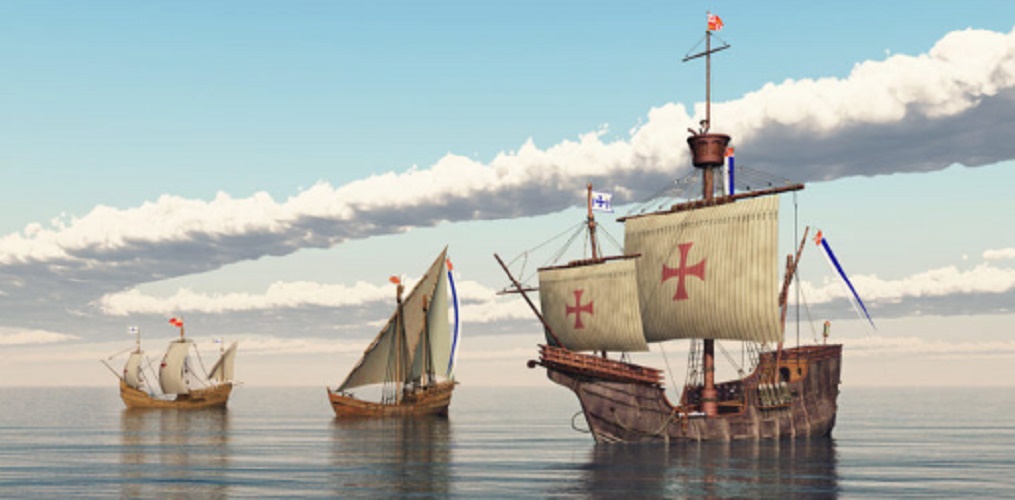Historical Account: Characteristics, Examples, Columbus Account
We explain what a historical account is, what its parts are and what it is for. In addition, its main features and examples.
What is a historical account?
A historical account is a chronological account of some relevant event in history. Its focus may be on one or several characters, on a series of events, on a specific conflict, or on a specific period.
As it is a story from the past, historical accounts always have an end. It is worth noting that, although they are based on events and true people (who really existed in the past), the focus and interpretation of each historian can vary.
Parts of a historical account

Like any story, the historical also has a series of parts or elements that compose it:
- Characters. The people who starred in the historical event that is being narrated and who are those who carry out the action and those who are affected by it. These characters are always real.
- Place. The physical space where the narrated events took place.
- Motivations The reasons that led the characters to act in a certain way and make the story a more human side.
- Obstacles The difficulties that forced the protagonists to modify their initial plans and help to better understand the development of the facts.
- Final. The end point of the narrated event, which may include its consequences, implications, analysis or conclusions . In this part it is necessary to narrate what happened with the characters and with the physical spaces where the events took place.
What is the historical account for?
Historical accounts serve to understand how certain events that marked humanity were carried out . In addition, they allow us to know what their implications were and their scope until today.
Knowing and understanding history is key to understanding each of the cultures and proposing that societies do not repeat past mistakes.
Characteristics of the historical account
Some of the qualities that historical accounts have are the following:
- Of course. The reader must understand how the historical event narrated and, for that, details and explanations are used.
- Chronological The historical account must be structured chronologically, that is, as things happened in time .
- Objectives . The author of the story must abide by the facts and use truthful and reliable sources.
- In the past Historical accounts are usually written in the past, using verbal conjugations in the past.
Examples of historical accounts

Historical stories can be narrated from different genres such as:
- Historical novel. Like any novel , it tells a story but it can happen that the characters are true and what is told about them, not quite. The author attributes certain freedoms and include fictional characters but located in a certain real historical context, or narrate a historical event with real characters in a novelized tone.
- Documentaries It is a journalistic genre that usually includes documents, images and testimonies that act as conductive threads of the historical fact that is being narrated. The most common format is audiovisual, but it can also be radial.
- Biography . The focus is on a character of relevance, and The story tells his life in the most reliable way possible, revealing data and moments of his life that are little known.
Historical account of Christopher Columbus

Although Christopher Columbus learned from a young age the trade of weaver, inherited from his parents, he was always interested in navigation . From a young age he was part of expeditions. In addition, he had some ease with languages, which allowed him to access the Greek writings of Ptolemy. It was thanks to his interests and reflexive ability that he began to defend the idea that planet Earth was round.
In 1453 the Ottomans marked the end of the Byzantine Empire, after the occupation of Constantinople and this brought difficulties for European and Arab merchants, who were in charge of controlling trade between India and the old continent. All trade routes were left to the Turks , which prevented Christian merchants from performing in Constantinople, which prompted the search for alternative routes to the east.
Then, many European nations made several attempts to reestablish these trade links. But the Portuguese were the ones who took the first step to deploy trade by sea and surround Africa to reach India, China and Southeast Asia.
In this context, Columbus proposed to sail westward but the King of Portugal, John II, opposed . This pushed Columbus to move to Spain, where he won the support of the monarchy.
In August 1942 the Genoese left Puerto de Palos with three ships : Santa María, la Pinta and La Niña heading west. The route was more extensive than calculated, and they reached the American continent (which was not indicated in their plans) on October 12 of that year.




